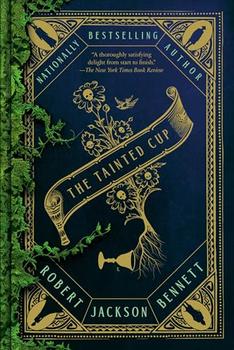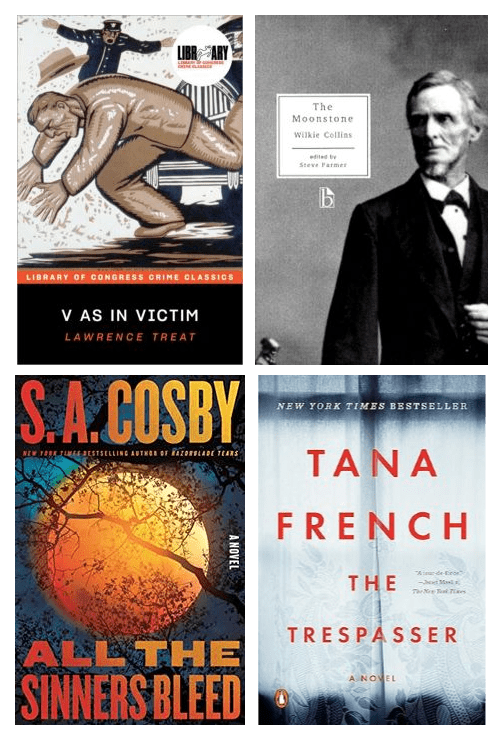Summary | Excerpt | Reading Guide | Reviews | Beyond the Book | Read-Alikes | Genres & Themes | Author Bio

This article relates to The Tainted Cup
 As most will know, a mystery novel is one that starts off with a conundrum – someone has been killed, something or someone has gone missing – and proceeds along a logical path until the puzzle is solved, generally with plot twists and red herrings along the way. There are many variations on this theme, and consequently many subgenres have cropped up over the decades since mystery novels first appeared, with an often-cited early English-language example being Wilkie Collins' 1860 work The Woman in White. These include:
As most will know, a mystery novel is one that starts off with a conundrum – someone has been killed, something or someone has gone missing – and proceeds along a logical path until the puzzle is solved, generally with plot twists and red herrings along the way. There are many variations on this theme, and consequently many subgenres have cropped up over the decades since mystery novels first appeared, with an often-cited early English-language example being Wilkie Collins' 1860 work The Woman in White. These include:
Robert Jackson Bennett's book The Tainted Cup can be considered a police procedural mystery (a subset of the detective genre) where the action is portrayed from the point of view of someone in law enforcement. This differs from the type of detective novel in which the lead is a private or amateur detective, and which frequently portrays police as inept, corrupt or ignorant. In police procedurals, the police are traditionally more perceptive and savvy, and solving the mystery is generally grounded in realistic investigative techniques (e.g., interviews, collecting evidence, forensic examinations). Wilkie Collins' The Moonstone (1868) is often considered one of the earliest police procedurals, though the narrative doesn't fit squarely in the genre. It features Sergeant Cuff, a policeman investigating the theft of a diamond, but some of the chapters are written from the perspective of other characters.
Mystery novels proliferated around the turn of the century in Britain and the United States, popularized by authors like Arthur Conan Doyle and Agatha Christie. By World War II, however, the market was glutted with pulp mysteries (many sub-par) and people were eager for something new. In 1945 Lawrence Treat published V as in Victim, which established the police procedural as a distinct mystery subgenre. It was immediately popular, which caused the advent of not only similar novels but radio dramas and, later, TV shows as well.
As the number of police procedurals grew, authors expanded into other genres. One of the first science fiction police protagonists was Lincoln Powell, the telepathic policeman at the heart of Alfred Bester's 1952 novel, The Demolished Man (which won the very first Hugo award). And many fans of early sci-fi will remember Isaac Asimov's classic duo Lije Baley and R. Daneel Olivaw, heroes of The Caves of Steel (1952) and its two sequels.
The genre is not without its critics, who often cite an unrealistic lack of nuance; authorities are frequently depicted as always right, always in control, always the good guys, and they always solve the crime. More recently, however, these rules have started to shift, allowing for more uncertainty, more gray areas in the plot and more details that are true to life. Aiding this evolution is the increased diversity among those being published in the genre, many of whom are incorporating cultural nuance that writers from an earlier age have lacked. S.A. Cosby's All the Sinners Bleed, Tana French's Dublin Murder Squad series and the Kyoichiro Kaga books by Keigo Higashino are just a few examples of modern police procedurals among many.
Filed under Reading Lists
![]() This article relates to The Tainted Cup.
It first ran in the March 6, 2024
issue of BookBrowse Recommends.
This article relates to The Tainted Cup.
It first ran in the March 6, 2024
issue of BookBrowse Recommends.
The only real blind person at Christmas-time is he who has not Christmas in his heart.
Click Here to find out who said this, as well as discovering other famous literary quotes!
Your guide toexceptional books
BookBrowse seeks out and recommends the best in contemporary fiction and nonfiction—books that not only engage and entertain but also deepen our understanding of ourselves and the world around us.